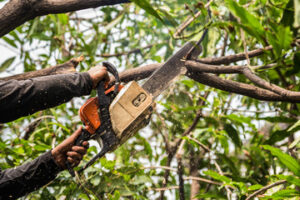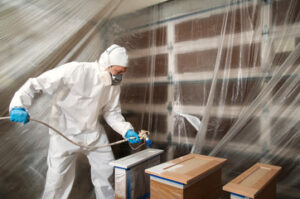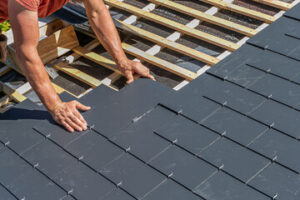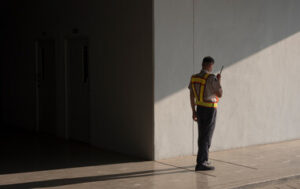AC Repair Round Rock TX is essential for maintaining a comfortable and energy-efficient indoor environment. When an air conditioning system malfunctions, it can lead to discomfort, increased energy costs, and potential damage to the unit. Prompt repair ensures that the system continues to function effectively, providing consistent cooling and improving overall air quality.
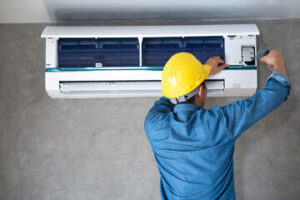
Understanding the causes of AC malfunctions and addressing them immediately can prevent minor issues from escalating into costly repairs or complete system failures. Regular maintenance and professional repair services help keep the unit operating at peak performance and extend its lifespan.
One of the most common problems with AC systems is a refrigerant leak. Refrigerant is essential for the cooling process, and when levels drop due to a leak, the system loses its ability to cool effectively. A refrigerant leak can result from corroded coils, poor installation, or damage to the refrigerant lines. When a leak occurs, the system may blow warm air or struggle to maintain the desired temperature. Repairing a refrigerant leak requires locating the source of the leak, sealing it, and recharging the system with the correct amount of refrigerant. Failing to address a refrigerant leak promptly can cause the compressor to overheat and fail, leading to a more expensive repair.
Clogged or dirty air filters are another frequent cause of AC malfunctions. Air filters trap dust, dirt, and other particles to prevent them from entering the system. Over time, these filters can become clogged, restricting airflow and forcing the system to work harder to maintain the set temperature. Reduced airflow can cause the evaporator coil to freeze, leading to further damage. Cleaning or replacing air filters regularly helps prevent this problem and ensures that the system operates efficiently. A clean filter also improves indoor air quality by reducing allergens and pollutants circulating in the air.
Thermostat issues are a common reason why an AC system may fail to maintain the desired temperature. If the thermostat is not calibrated correctly or is malfunctioning, it can cause the system to cycle too frequently or fail to turn on at all. Upgrading to a programmable or smart thermostat can improve temperature control and energy efficiency. A professional technician can inspect the thermostat, recalibrate it if necessary, and ensure that it communicates properly with the AC unit. Adjusting the thermostat settings based on the time of day and occupancy patterns can also improve overall comfort and reduce energy consumption.
Frozen evaporator coils can severely impact the performance of an AC system. When the evaporator coil freezes, it restricts airflow and reduces the system’s ability to cool. This problem can be caused by low refrigerant levels, clogged filters, or blocked ducts. Thawing the coil and addressing the underlying issue can restore normal operation. A technician can inspect the refrigerant levels, clean the filters, and check for any obstructions in the ductwork to prevent the coil from freezing again. Maintaining proper airflow and refrigerant levels is essential for preventing coil freezing and ensuring consistent cooling performance.
Leaking water around the AC unit is another sign that repair may be needed. The system produces condensation as it cools the air, which is typically drained away through a condensate drain line. If the drain line becomes clogged with dirt or debris, water can back up and overflow, causing damage to floors, walls, and ceilings. A clogged drain line can also lead to mold growth and poor indoor air quality. Repairing a clogged drain line involves clearing the blockage and ensuring that the condensate pump is functioning properly. Installing a drain line safety switch can help prevent future leaks by shutting down the system if the drain line becomes clogged.
Weak or uneven airflow is often caused by problems with the blower motor or ductwork. If the blower motor is not functioning properly, it can reduce the amount of air circulating through the system, leading to uneven cooling and hot spots in certain areas of the building. Damaged or poorly insulated ductwork can also contribute to airflow problems. A professional technician can inspect the blower motor, replace worn-out components, and repair any damage to the ductwork. Properly sealed and insulated ducts improve airflow, enhance energy efficiency, and ensure even temperature distribution throughout the building.
Electrical issues are another common cause of AC failure. Faulty wiring, damaged capacitors, and worn-out contactors can prevent the system from starting or cause it to shut down unexpectedly. Electrical problems can also lead to short cycling, where the system turns on and off frequently, reducing overall efficiency and increasing wear on components. A professional technician can diagnose electrical issues, repair or replace damaged components, and ensure that all connections are secure. Installing surge protectors and upgrading electrical panels can help prevent future electrical problems and improve system reliability.
Unusual noises coming from the AC system can indicate mechanical problems that require immediate attention. Grinding, squealing, or banging sounds may result from loose or damaged components, such as fan blades, belts, or motor bearings. Ignoring these noises can lead to further damage and potential system failure. A technician can inspect the system, tighten loose components, lubricate moving parts, and replace any damaged parts. Proper maintenance and timely repair help prevent mechanical issues and ensure quiet operation.
Short cycling, where the AC system turns on and off repeatedly within a short period, is often caused by an oversized unit, a faulty thermostat, or a malfunctioning compressor. An oversized unit may cool the space too quickly, causing the system to shut down before completing a full cooling cycle. A technician can evaluate the size of the unit, adjust the thermostat settings, and inspect the compressor for signs of damage. Replacing a malfunctioning compressor or installing a properly sized unit can resolve short cycling and improve overall efficiency.
Poor humidity control is another issue that may require AC repair. An AC system is designed to remove excess moisture from the air during the cooling process. If the system fails to control humidity levels, it can result in a damp and uncomfortable indoor environment. Poor humidity control can be caused by an oversized unit, a malfunctioning thermostat, or dirty coils. Cleaning the coils, adjusting the unit size, and upgrading the thermostat can help restore proper humidity control and improve indoor comfort. Installing a dehumidifier may also enhance moisture removal and improve air quality.
The compressor is the heart of the AC system, and when it fails, the entire system can stop working. Compressor failure can result from refrigerant imbalances, electrical problems, or overheating. Repairing or replacing a compressor is a complex task that requires specialized knowledge and equipment. A technician can diagnose the cause of compressor failure, recharge the refrigerant, and repair or replace damaged components. Maintaining proper refrigerant levels, cleaning coils, and ensuring that electrical connections are secure can help prevent compressor failure and extend the lifespan of the system.
Regular maintenance is key to reducing the need for major AC repairs and ensuring consistent performance. Scheduled inspections and tune-ups allow technicians to identify and address minor issues before they escalate into larger problems. Maintenance tasks such as cleaning filters, checking refrigerant levels, inspecting ductwork, and testing electrical connections improve efficiency and reduce energy costs. Professional technicians can also calibrate thermostats, clean coils, and lubricate moving parts to enhance overall performance. Investing in routine maintenance extends the lifespan of the AC system and ensures reliable cooling year-round.
Investing in professional AC repair services ensures that the system operates at peak efficiency and provides reliable comfort. Skilled technicians have the knowledge and experience to diagnose complex issues, perform accurate repairs, and recommend appropriate upgrades or replacements. Addressing repair issues promptly prevents further damage, reduces energy consumption, and improves overall system performance. Maintaining a well-functioning AC system enhances indoor comfort, protects property value, and contributes to a healthier living environment. Recognizing early signs of trouble and relying on professional repair services helps ensure that the system remains dependable and efficient for years to come.
